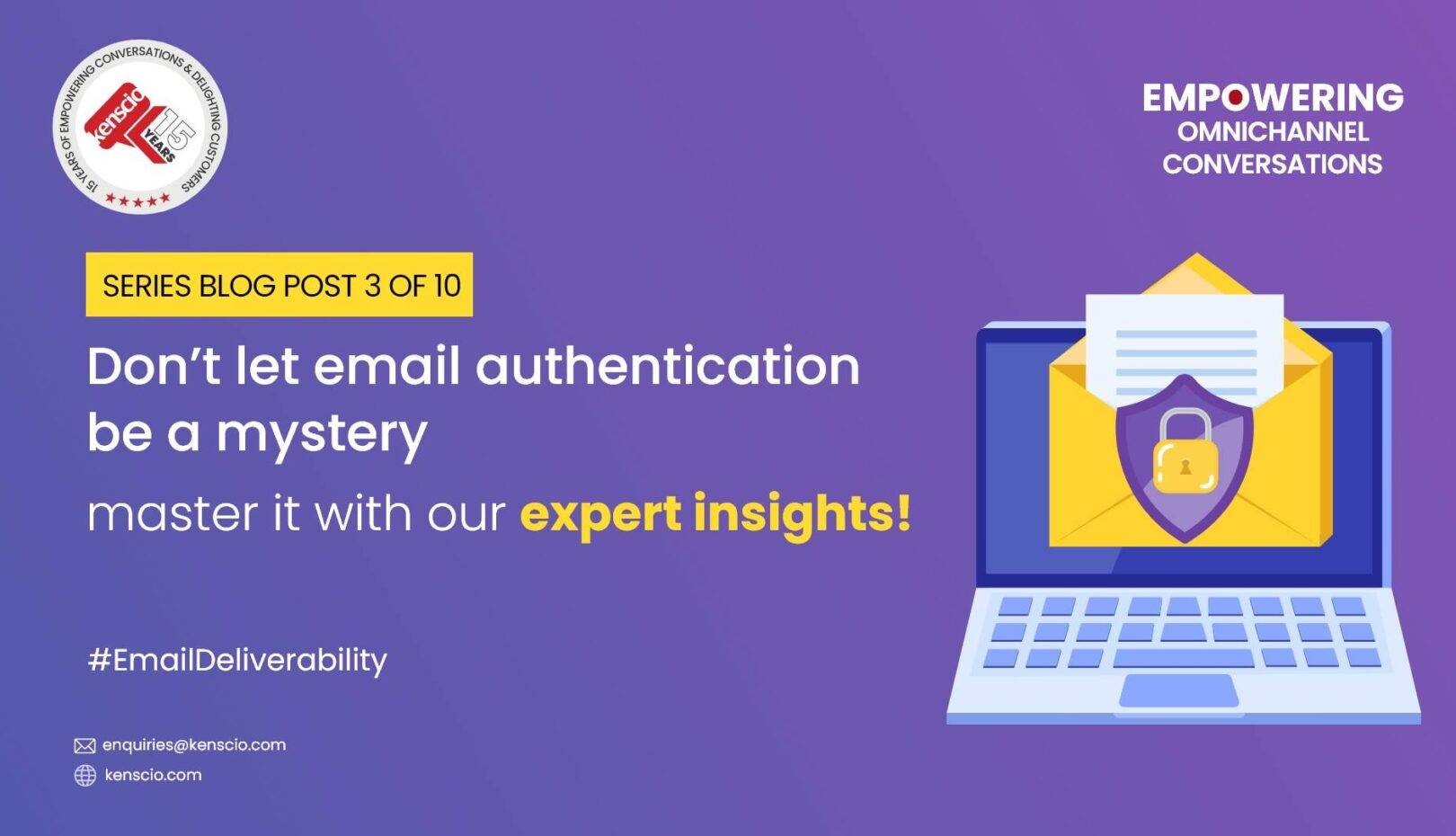- January 22, 2025
- by Hardik Vyas
Series Blog Post 3 of 10: Mastering Email Authentication – DKIM, SPF, DMARC, and BIMI
Did you know that 90% of cyberattacks begin with phishing emails? For businesses relying on email marketing, failing to implement robust email authentication can expose your brand to spoofing and phishing attacks, damaging your reputation and customer trust. Thankfully, protocols like DKIM, SPF, DMARC, and BIMI offer a powerful defense, ensuring your emails are verified, secure, and deliver the best engagement results.
Key Authentication Protocols
DKIM (DomainKeys Identified Mail):
- Adds a digital signature to your emails.
- Verifies that the email was sent by an authorized sender.
- Helps prevent email spoofing.
SPF (Sender Policy Framework):
- Specifies which IP addresses are authorized to send emails on behalf of your domain.
- Helps prevent unauthorized use of your domain.
DMARC (Domain-Based Message Authentication, Reporting & Conformance):
- Provides instructions to email providers on handling emails that fail authentication checks.
- Offers benefits like:
- Brand Protection: Prevents unauthorized use of your domain.
- Improved Deliverability: Helps your emails reach the inbox.
- Security: Reduces phishing risks and spam.
BIMI (Brand Indicators for Message Identification):
- What It Does: Allows you to display your brand logo directly in the recipient’s inbox.
- Benefits:
- Brand Recognition and Trust: Reinforces brand identity, making your emails instantly recognizable.
- Improved Engagement: Studies show that branded emails with BIMI see up to a 10% increase in engagement rates.
- Credibility: Builds trust by visually validating your emails as authentic.
Implementing Email Authentication
Set Up DKIM:
- Generate a private and public key pair.
- Add a DNS record to your domain to publish the public key.
- Configure your email server to sign outgoing emails with the private key.
Set Up SPF:
- Create an SPF record specifying the IP addresses authorized to send emails on your behalf.
- Add the SPF record to your domain’s DNS settings.
Set Up DMARC:
- Create a DMARC record specifying your preferred policy (reject, quarantine, none).
- Add the DMARC record to your domain’s DNS settings.
Set Up BIMI:
- Create a BIMI record specifying your brand logo and verification method.
- Add the BIMI record to your domain’s DNS settings.
Monitoring and Troubleshooting
- Use DMARC Reporting: Analyze DMARC reports to identify authentication failures and take corrective action.
- Work with Your Email Provider: Consult your provider for guidance on implementation and troubleshooting.
- Stay Updated: Keep abreast of the latest security standards and best practices to maintain robust email authentication.
Kenscio’s Expertise
At Kenscio, we simplify the implementation of these protocols, offering tools and guidance tailored to your business needs. From setting up BIMI to interpreting DMARC reports, we ensure your email campaigns achieve maximum success.
Looking Ahead
This is just the beginning of your journey to mastering email deliverability. As part of this 10-part series, be sure to read Part 1: The Email Deliverability Landscape to understand the foundation, and stay tuned for upcoming posts where we’ll dive into critical topics like email authentication, list hygiene, content optimization, and advanced strategies to maximize your email marketing success. Read the Master Blog Mastering Email Deliverability and Performance: A Comprehensive Guide to Boost email deliverability and performance with expert tips and strategies.
Stay tuned for Part 4, where we’ll explore strategies for crafting optimized email content that not only engages your audience but also avoids spam filters.
